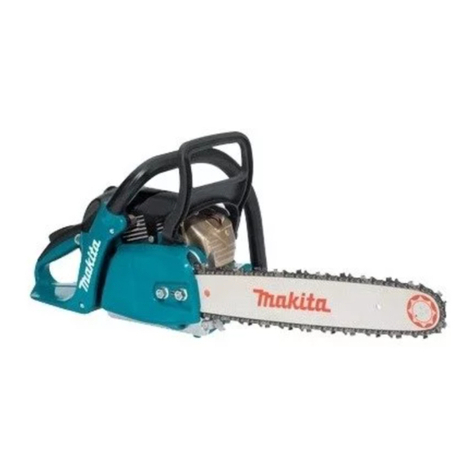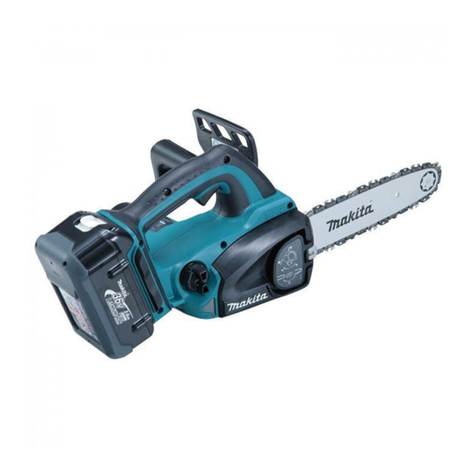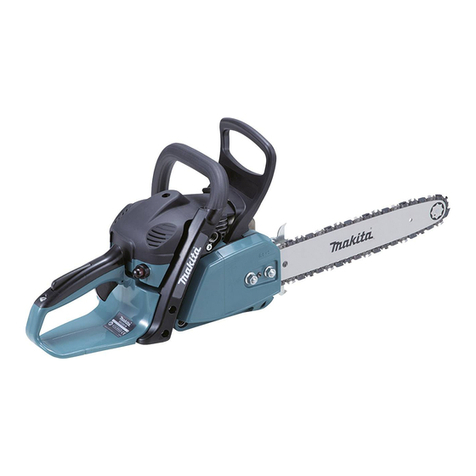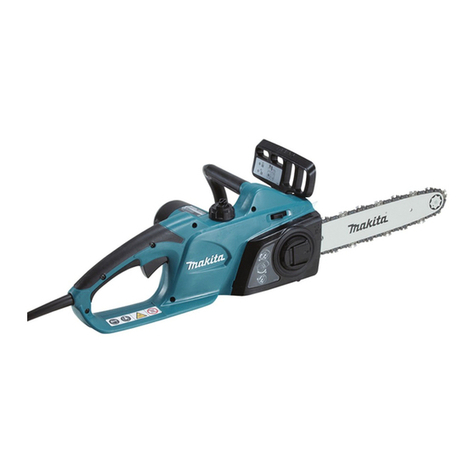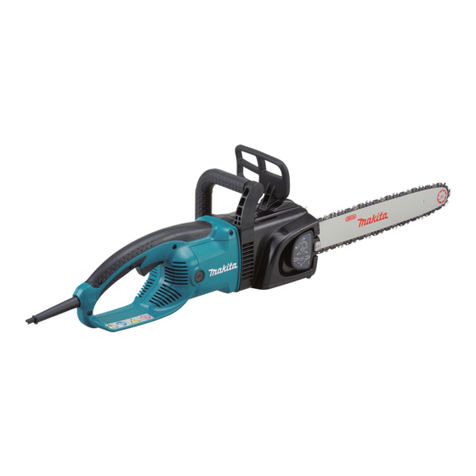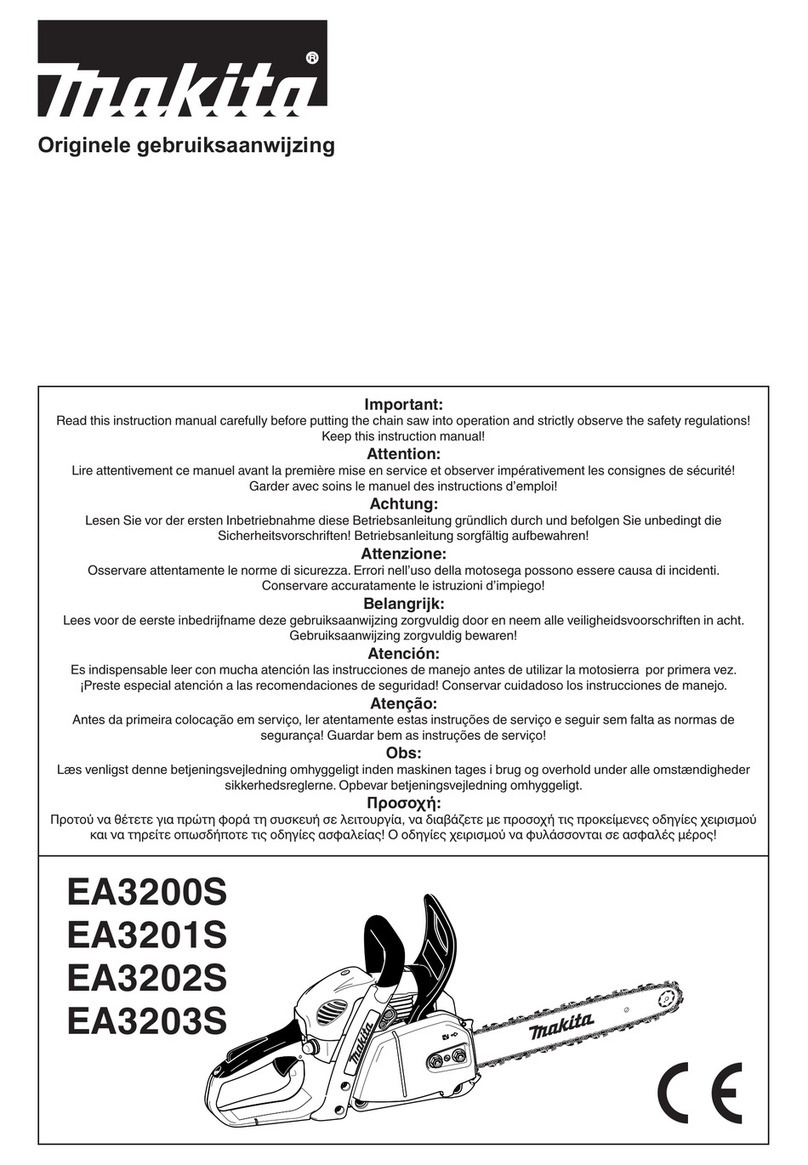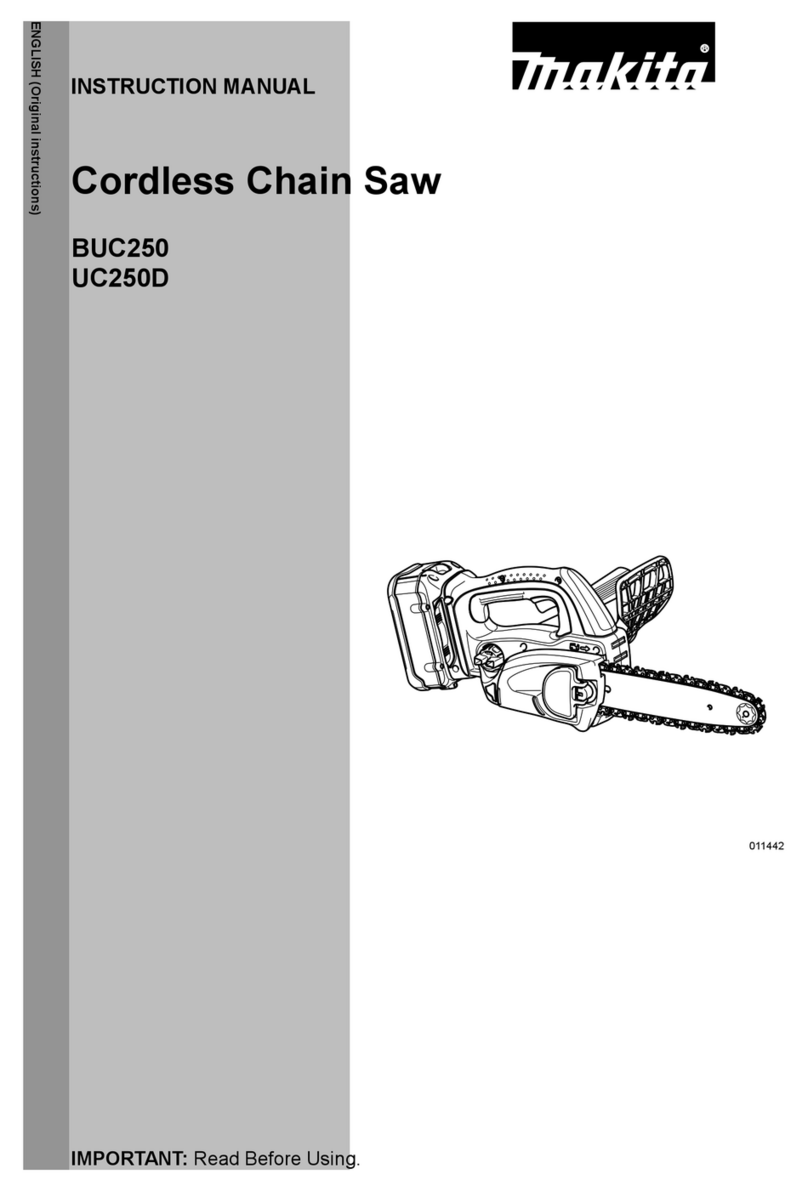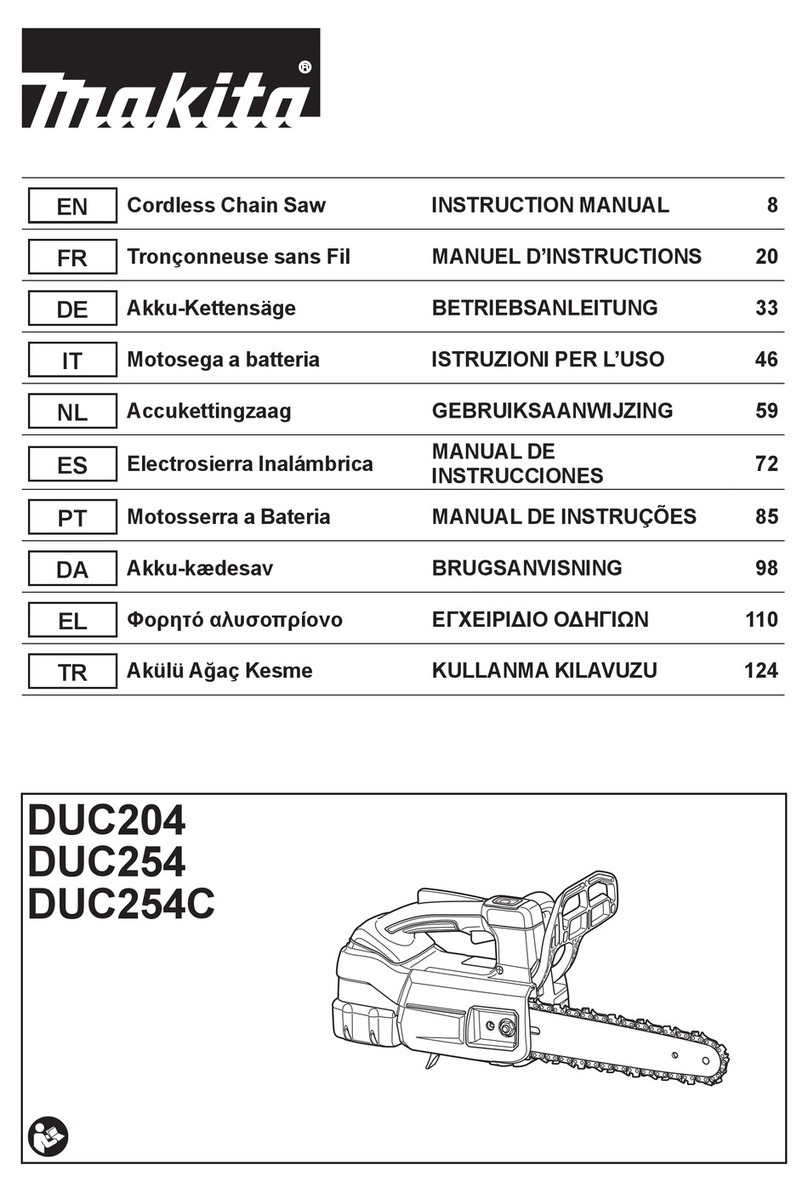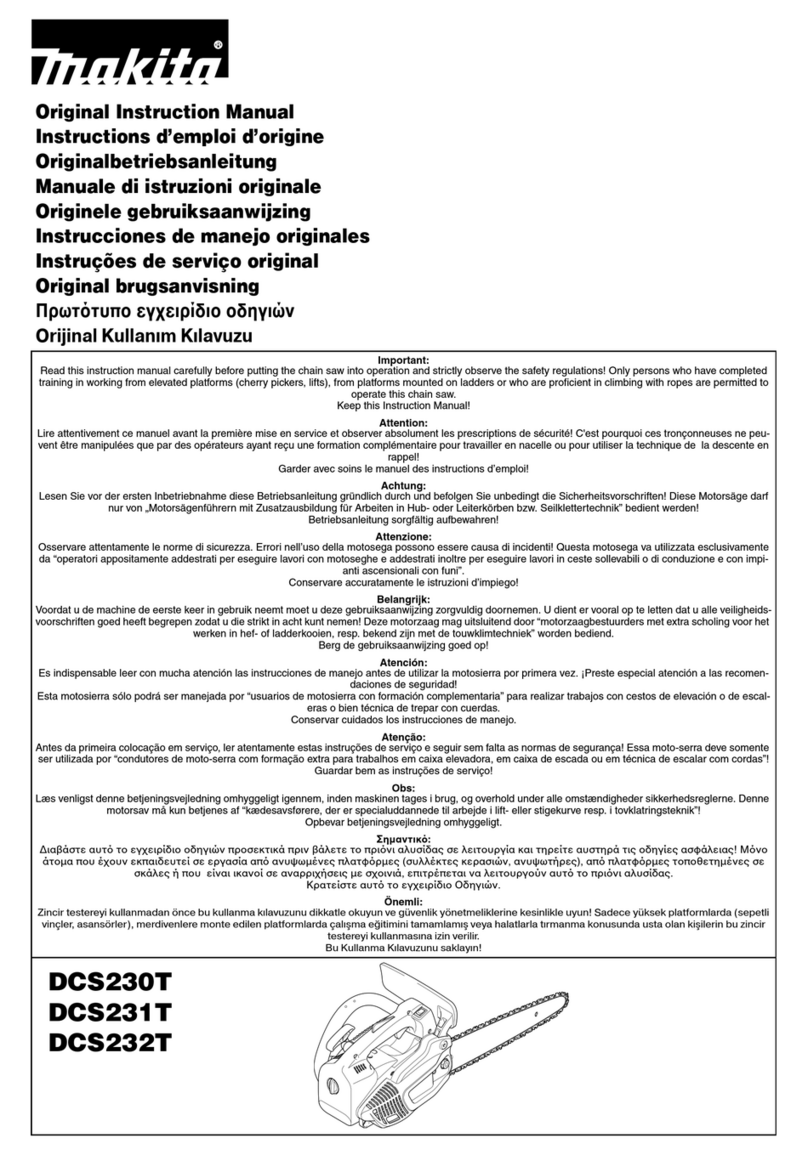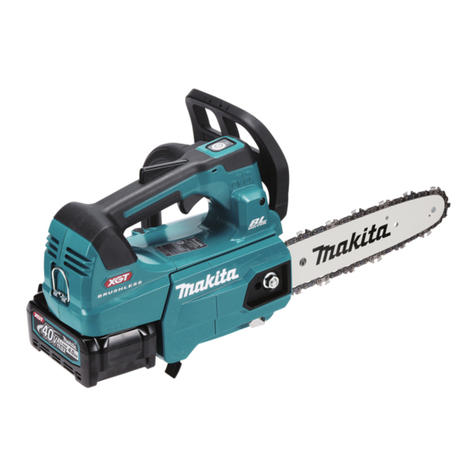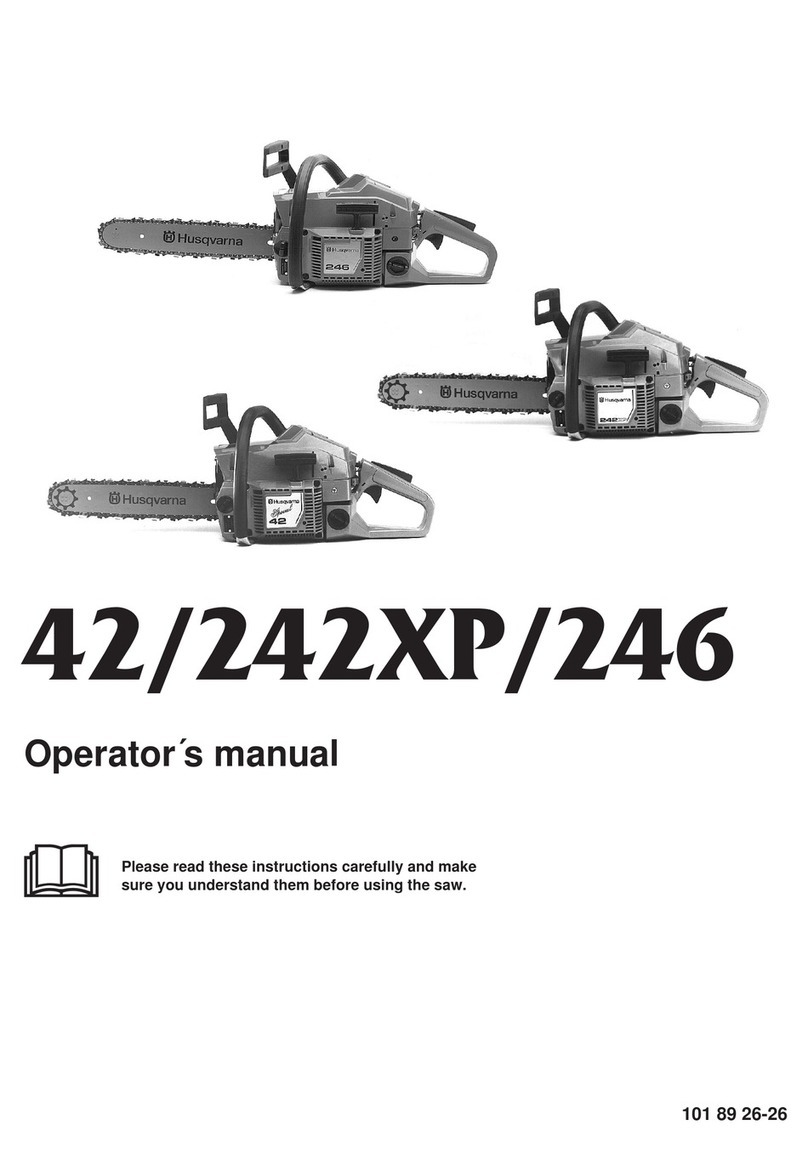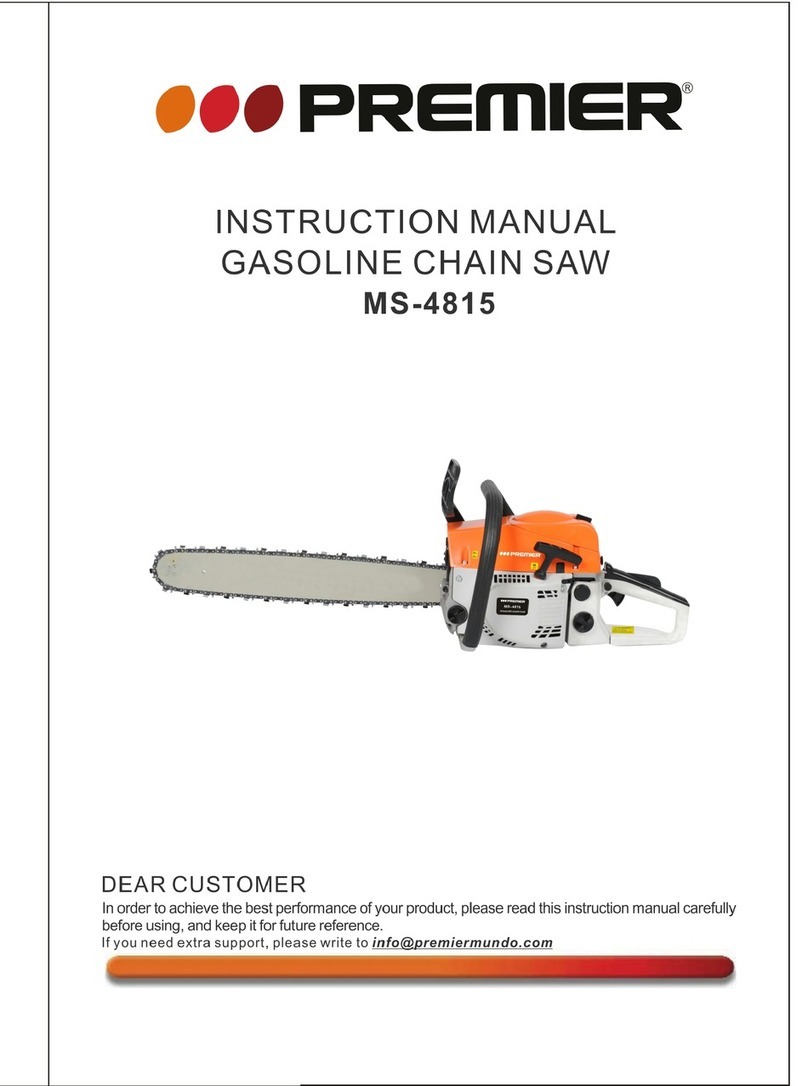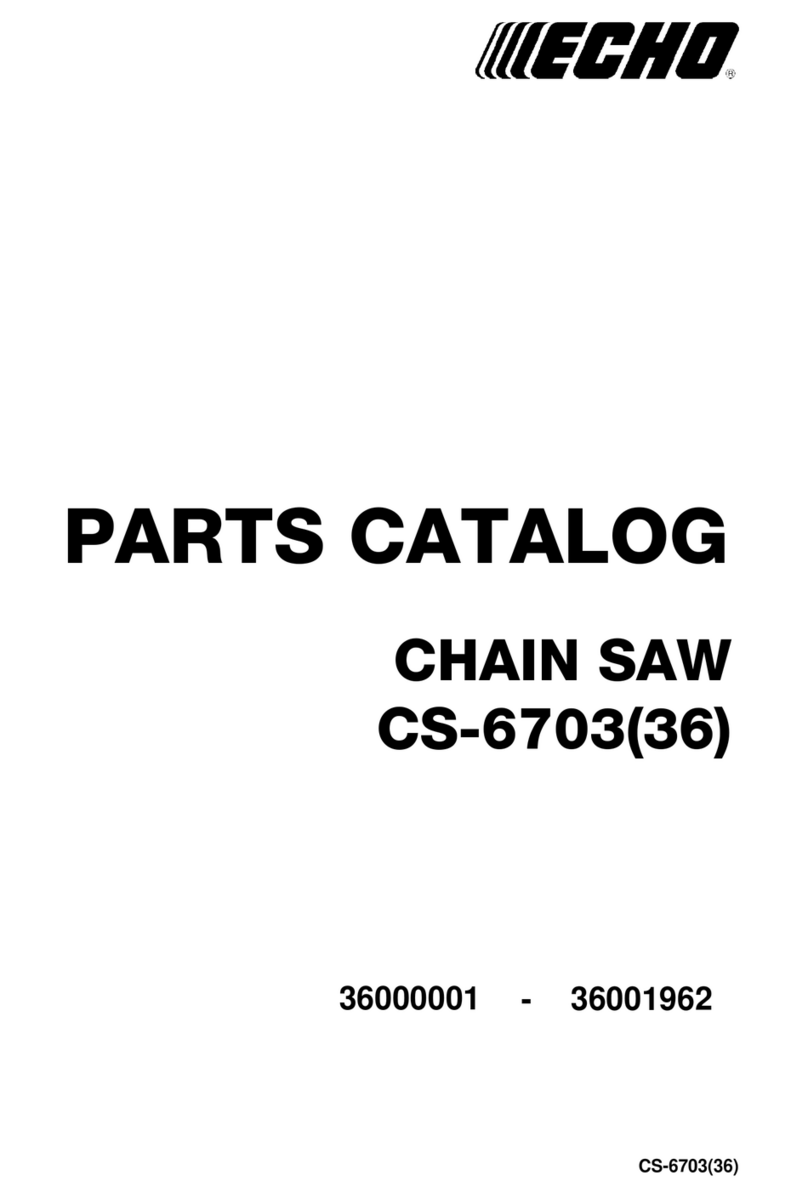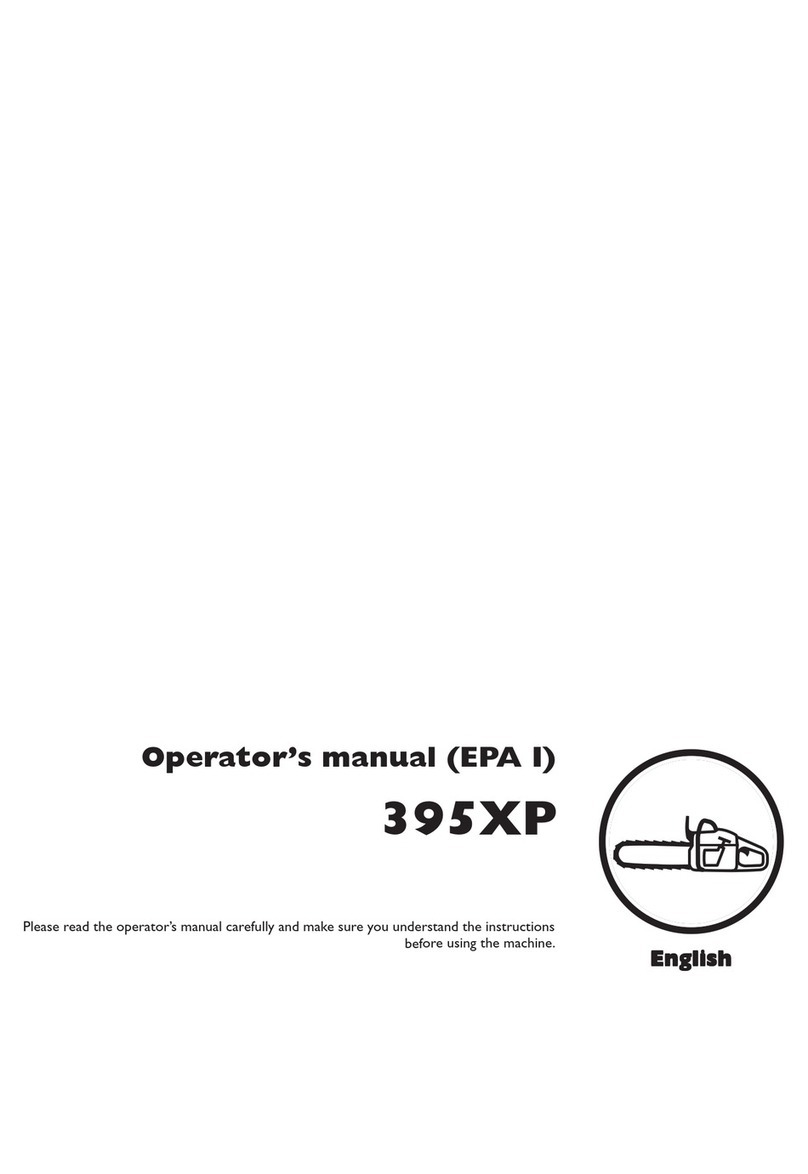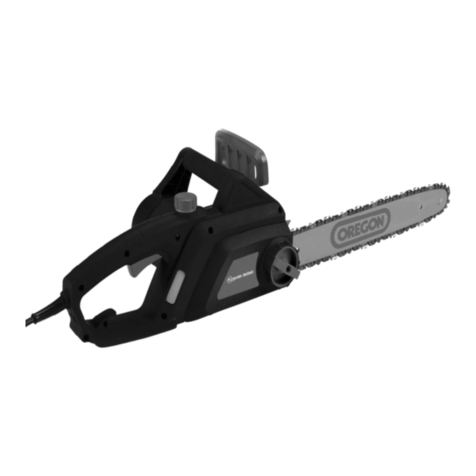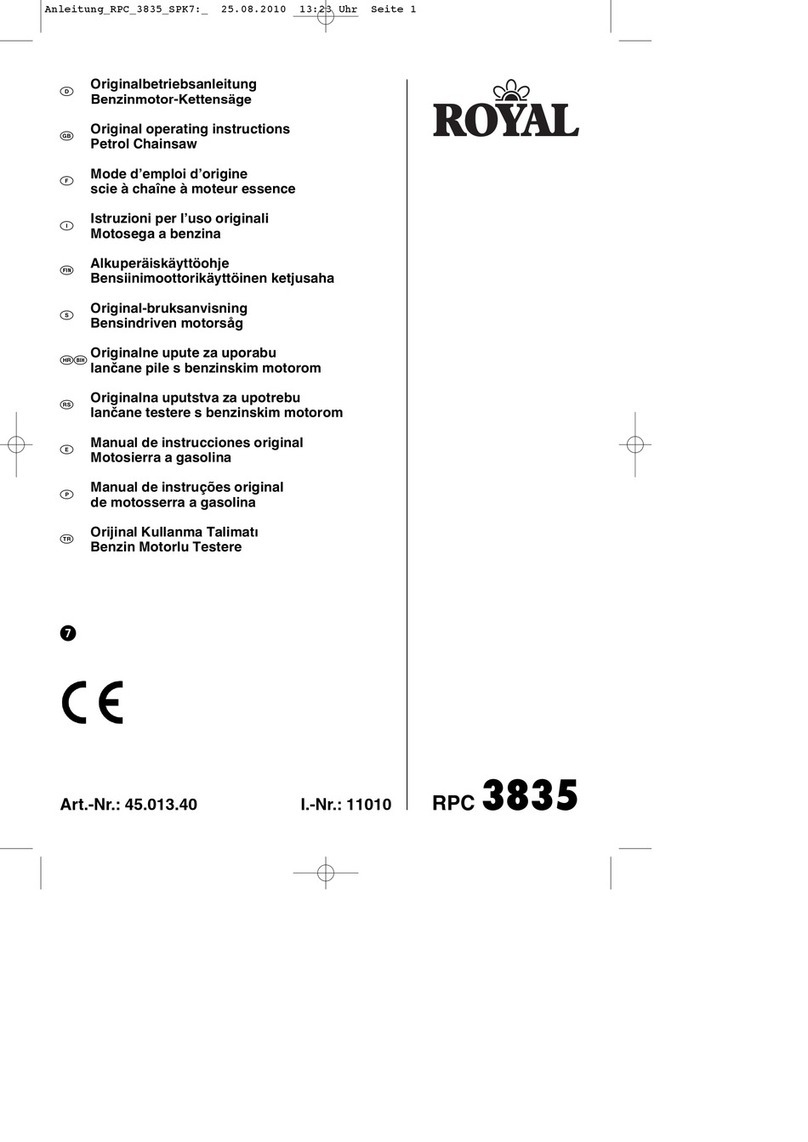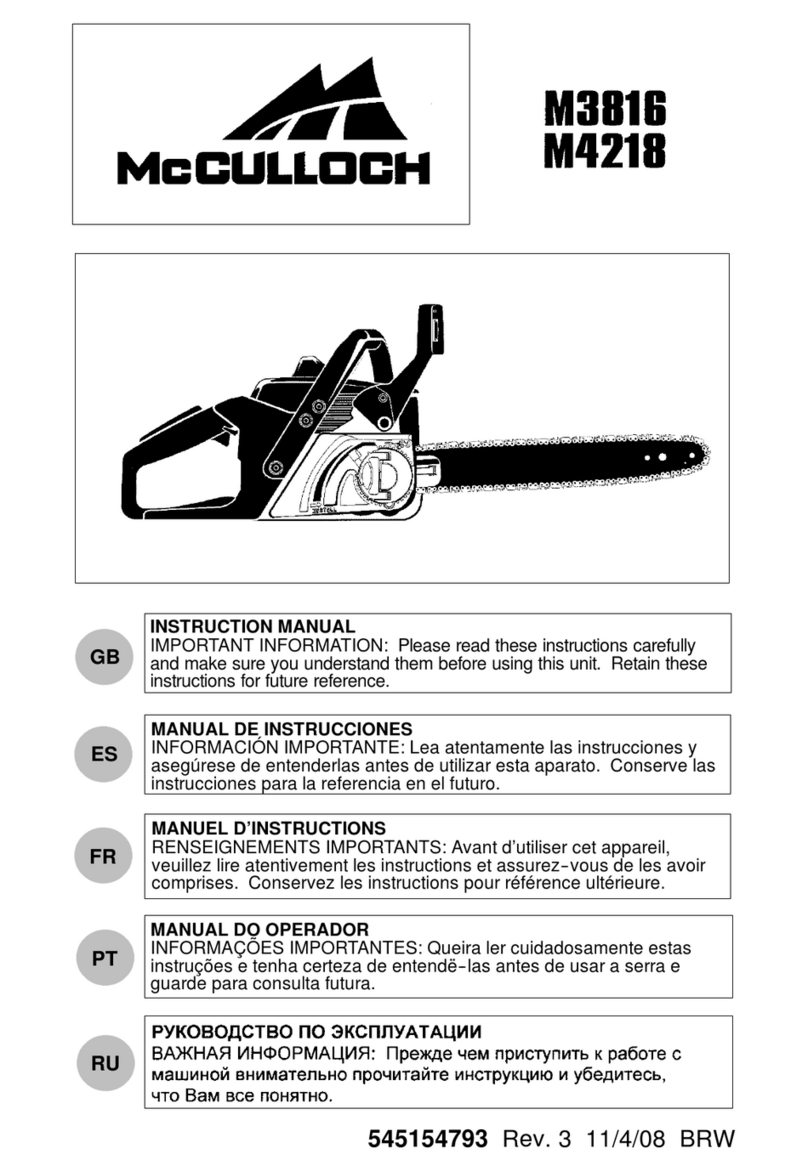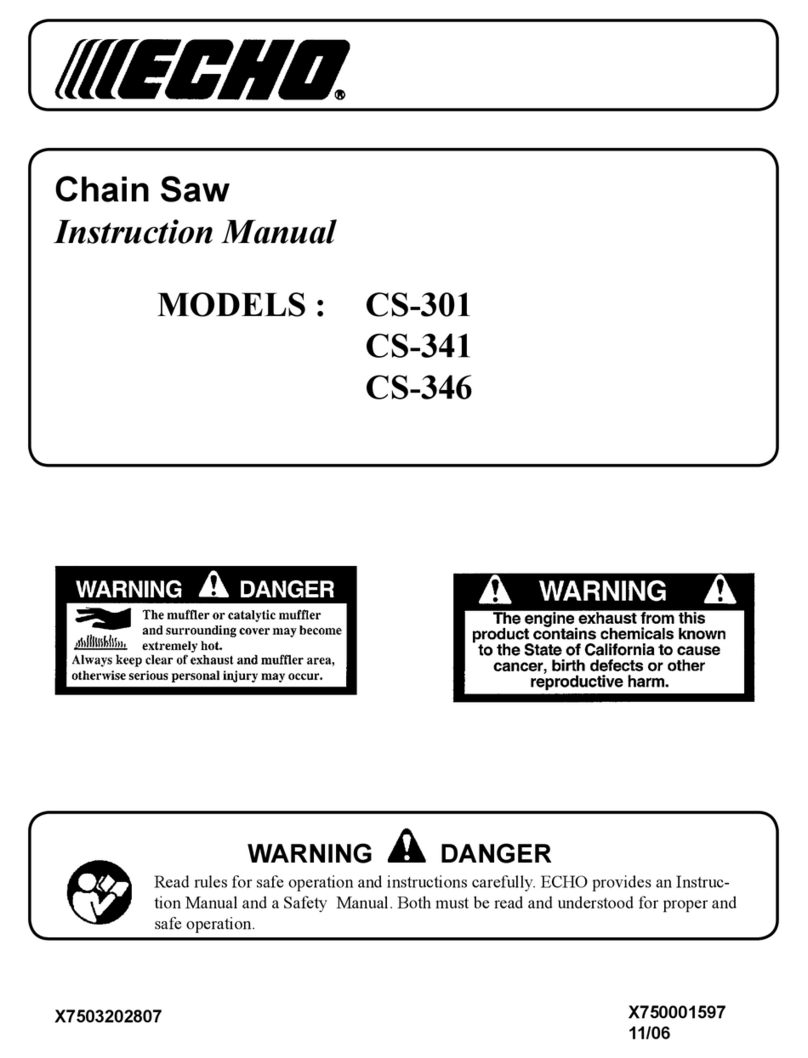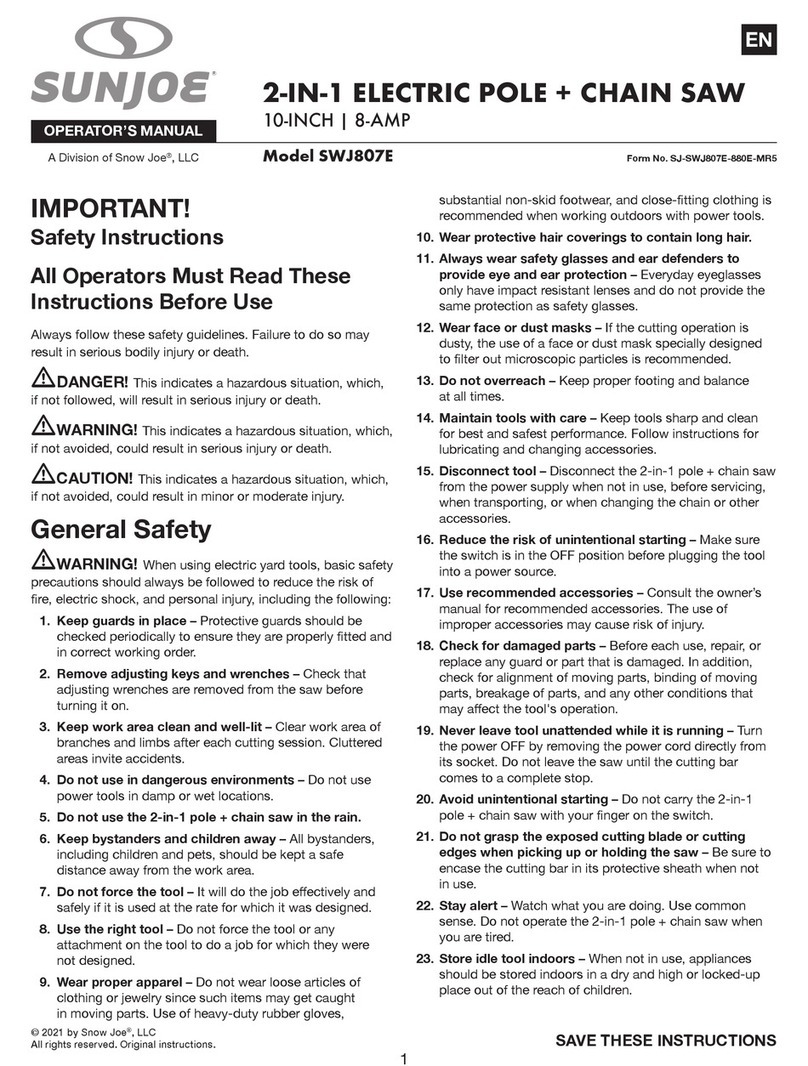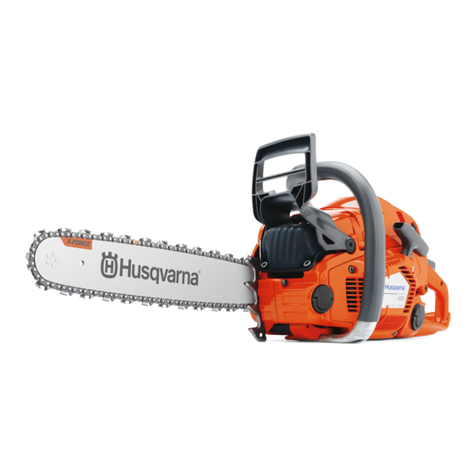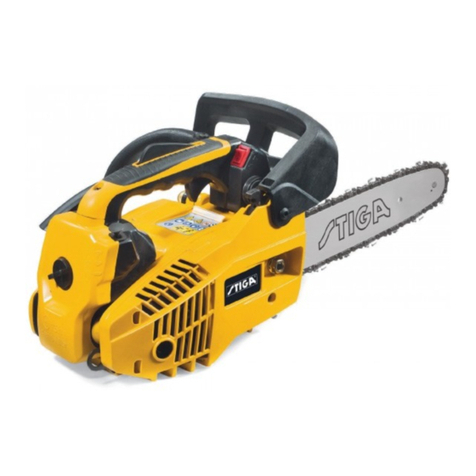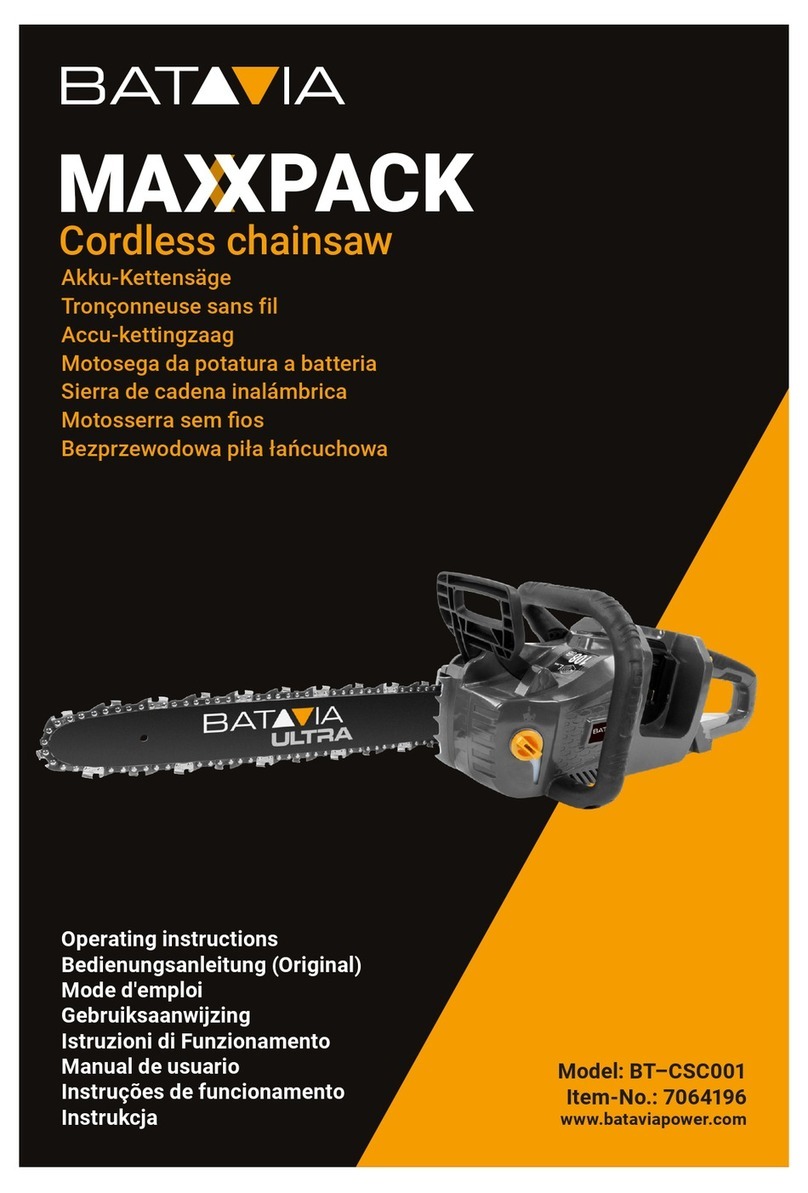4 ENGLISH
6. Keep cutting tools sharp and clean. Properly
maintained cutting tools with sharp cutting edges
are less likely to bind and are easier to control.
7. Use the power tool, accessories and tool bits
etc. in accordance with these instructions, tak-
ing into account the working conditions and
the work to be performed. Use of the power tool
IRURSHUDWLRQVGLႇHUHQWIURPWKRVHLQWHQGHGFRXOG
UHVXOWLQDKD]DUGRXVVLWXDWLRQ
8. Keep handles and grasping surfaces dry,
clean and free from oil and grease. Slippery
handles and grasping surfaces do not allow for
safe handling and control of the tool in unexpected
situations.
9. When using the tool, do not wear cloth work
gloves which may be entangled. The entangle-
ment of cloth work gloves in the moving parts may
UHVXOWLQSHUVRQDOLQMXU\
Battery tool use and care
1. 5HFKDUJHRQO\ZLWKWKHFKDUJHUVSHFL¿HGE\
the manufacturer. A charger that is suitable for
RQHW\SHRIEDWWHU\SDFNPD\FUHDWHDULVNRI¿UH
when used with another battery pack.
2. 8VHSRZHUWRROVRQO\ZLWKVSHFL¿FDOO\GHVLJ-
nated battery packs. Use of any other battery
SDFNVPD\FUHDWHDULVNRILQMXU\DQG¿UH
3. When battery pack is not in use, keep it away
from other metal objects, like paper clips,
coins, keys, nails, screws or other small metal
objects, that can make a connection from one
terminal to another. Shorting the battery termi-
QDOVWRJHWKHUPD\FDXVHEXUQVRUD¿UH
4. Under abusive conditions, liquid may be
ejected from the battery; avoid contact. If con-
WDFWDFFLGHQWDOO\RFFXUVÀXVKZLWKZDWHU,I
liquid contacts eyes, additionally seek medical
help./LTXLGHMHFWHGIURPWKHEDWWHU\PD\FDXVH
irritation or burns.
5. Do not use a battery pack or tool that is dam-
DJHGRUPRGL¿HG'DPDJHGRUPRGL¿HGEDWWHULHV
may exhibit unpredictable behaviour resulting in
¿UHH[SORVLRQRUULVNRILQMXU\
6. 'RQRWH[SRVHDEDWWHU\SDFNRUWRROWR¿UHRU
excessive temperature.([SRVXUHWR¿UHRUWHP-
perature above 130 °C may cause explosion.
7. Follow all charging instructions and do not
charge the battery pack or tool outside the
WHPSHUDWXUHUDQJHVSHFL¿HGLQWKHLQVWUXF-
tions. Charging improperly or at temperatures
RXWVLGHWKHVSHFL¿HGUDQJHPD\GDPDJHWKH
EDWWHU\DQGLQFUHDVHWKHULVNRI¿UH
Service
1. +DYH\RXUSRZHUWRROVHUYLFHGE\DTXDOL¿HG
repair person using only identical replacement
parts. This will ensure that the safety of the power
tool is maintained.
2. Never service damaged battery packs. Service
of battery packs should only be performed by the
PDQXIDFWXUHURUDXWKRUL]HGVHUYLFHSURYLGHUV
3. Follow instruction for lubricating and chang-
ing accessories.
4. Do not modify or attempt to repair the appli-
ance or the battery pack except as indicated in
the instructions for use and care.
General chain saw safety warnings
1. Keep all parts of the body away from the saw
chain when the chain saw is operating. Before
you start the chain saw, make sure the saw
chain is not contacting anything. A moment of
inattention while operating chain saws may cause
entanglement of your clothing or body with the
saw chain.
2. Always hold the chain saw with your right
hand on the rear handle and your left hand on
the front handle. Holding the chain saw with a
UHYHUVHGKDQGFRQ¿JXUDWLRQLQFUHDVHVWKHULVNRI
SHUVRQDOLQMXU\DQGVKRXOGQHYHUEHGRQH
3. Hold the chain saw by insulated gripping sur-
faces only, because the saw chain may contact
hidden wiring. Saw chains contacting a "live"
wire may make exposed metal parts of the chain
saw "live" and could give the operator an electric
shock.
4. Wear eye protection. Further protective equip-
ment for hearing, head, hands, legs and feet is
recommended. Adequate protective equipment
ZLOOUHGXFHSHUVRQDOLQMXU\IURPÀ\LQJGHEULVRU
accidental contact with the saw chain.
5. Do not operate a chain saw, on a ladder, from a
rooftop, or any unstable support. Operation of
a chain saw in this manner could result in serious
SHUVRQDOLQMXU\
6.
Do not operate a chain saw in a tree unless you
KDYHEHHQVSHFL¿FDOO\WUDLQHGWRGRVR Operation
of a chain saw in a tree without proper training could
LQFUHDVHWKHULVNRIVHULRXVSHUVRQDOLQMXU\
7.
Always keep proper footing and operate the chain
VDZRQO\ZKHQVWDQGLQJRQ¿[HGVHFXUHDQG
level surface. Slippery or unstable surfaces may
cause a loss of balance or control of the chain saw.
8. When cutting a limb that is under tension, be
alert for spring back. When the tension in the
ZRRG¿EUHVLVUHOHDVHGWKHVSULQJORDGHGOLPE
may strike the operator and/or throw the chain
saw out of control.
9.
Use extreme caution when cutting brush and sap-
lings. The slender material may catch the saw chain
DQGEHZKLSSHGWRZDUG\RXRUSXOO\RXRႇEDODQFH
10. Carry the chain saw by the front handle with
WKHFKDLQVDZVZLWFKHGRႇDQGDZD\IURP\RXU
body. When transporting or storing the chain
VDZDOZD\V¿WWKHJXLGHEDUFRYHU Proper
handling of the chain saw will reduce the likelihood
of accidental contact with the moving saw chain.
11. Follow instructions for lubricating, chain
tensioning and changing the bar and chain.
Improperly tensioned or lubricated chain may
either break or increase the chance for kickback.
12. Cut wood only. Do not use chain saw for pur-
poses not intended. For example: do not use
chain saw for cutting metal, plastic, masonry
or non-wood building materials. Use of the
FKDLQVDZIRURSHUDWLRQVGLႇHUHQWWKDQLQWHQGHG
FRXOGUHVXOWLQDKD]DUGRXVVLWXDWLRQ
13. Do not attempt to fell a tree until you have an
understanding of the risks and how to avoid
them.6HULRXVLQMXU\FRXOGRFFXUWRWKHRSHUDWRURU
bystanders while felling a tree.


